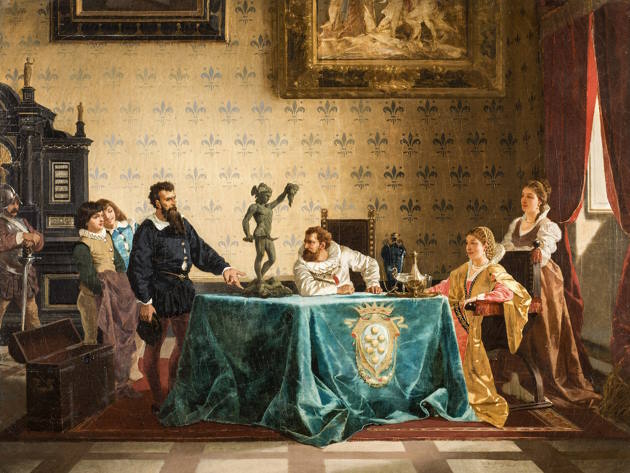
The National Museum of Castel Sant'Angelo hosts a suggestive exhibition dedicated to Justice in Rome between the 15th and 19th centuries and to the symbolic place of the trials, punishments and death sentences of the time.
The imposing construction erected by Hadrian, first the emperor's mausoleum, then a fortress, refuge and residence of the popes, became a prison in the 14th century. In its fearsome cells and in its spaces, conspirators, foreigners, assassins, patriots and figures, who become legendary, such as the young Roman noble Beatrice Cenci, the philosopher Giordano Bruno, the artist Benvenuto Cellini, the esotericist Borri, the enigmatic Count of Cagliostro, lived, suffered or lost their lives.
The exhibition path, curated by Mariastella Margozzi with the collaboration of Vincenzo Lemmo, Michele Occhioni and Laura Salerno, recalls the history of the Castle and the atmosphere of the time in five sections through the stories of those who lived the experience of judgment and punishment in the Eternal City. Among these, Beatrice Cenci and her family, accused of parricide and executed at the end of the 16th century, the necromancer, doctor and charlatan Count of Cagliostro, the Carbonari, the Garibaldians, the executioner of the Papal State, Mastro Titta, whose punishments were told by the famous Roman poet Giuseppe Gioachino Belli.
On display are paintings, sculptures, drawings and engravings, remarkable documents of famous trials, memoirs of some protagonists, objects, original texts, poems, and other curiosities. Also exhibited are the sixteen panels of the Carceri d'Invenzione by Giovanni Battista Piranesi, which retrace the suggestions of the Castle: the Hall of Justice, Piazza delle Fucilazioni, in front of the Chapel of the Condemned, other sites in the city, such as Piazza di Ponte, where the hangings and beheadings took place, and the prisons, which together with the Terrace of the Angel, are the background of the third and last act of the famous Tosca by Giacomo Puccini.
Photo: Amos Cassioli (Asciano, 1832 – Firenze, 1891, Benvenuto Cellini presents the sketch model of Perseus to Cosimo I de' Medici, Duke of Tuscany, 1876 ca. Olio su tela/Oil on canvas, Siena, Collection Roberto Bianchi
Informations
Dal 20 giugno al 1 ottobre 2023
Dal martedì alla domenica dalle ore 9.00 – 19.30 (ultimo ingresso ore 18.30).
Chiuso il lunedì (salvo aperture straordinarie disposte dal Ministero della Cultura)
Per gli aggiornamenti e le modalità di visita consultare il > www.gebart.it/musei/museo-nazionale-di-castel-santangelo.
 Condividi
Condividi











































